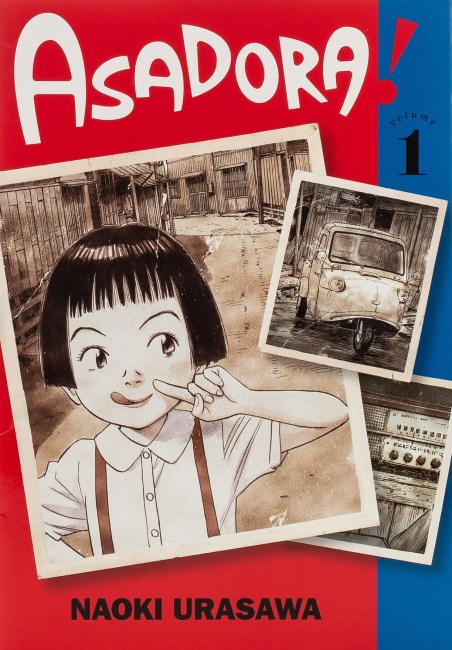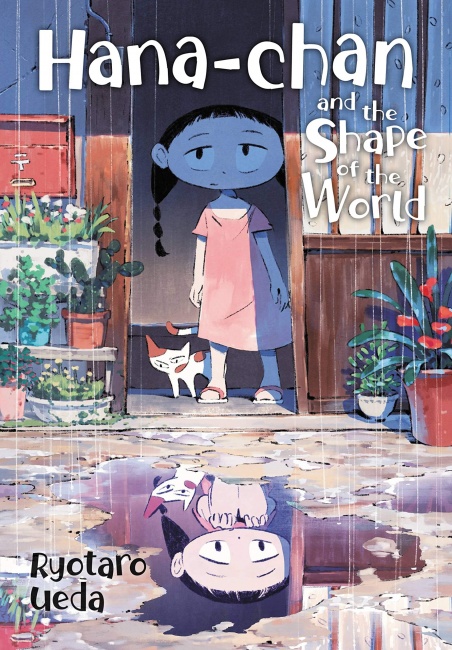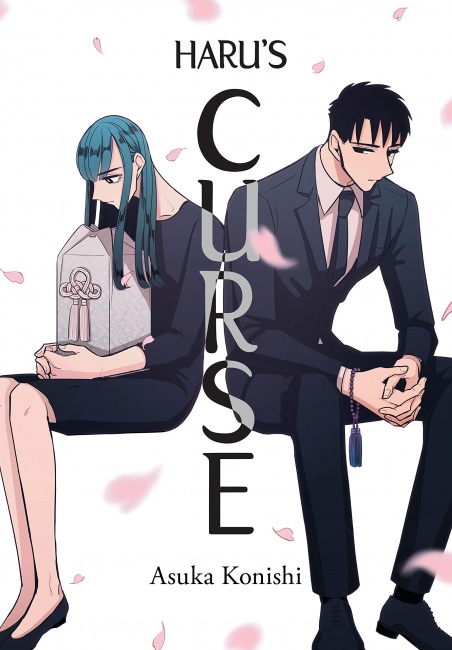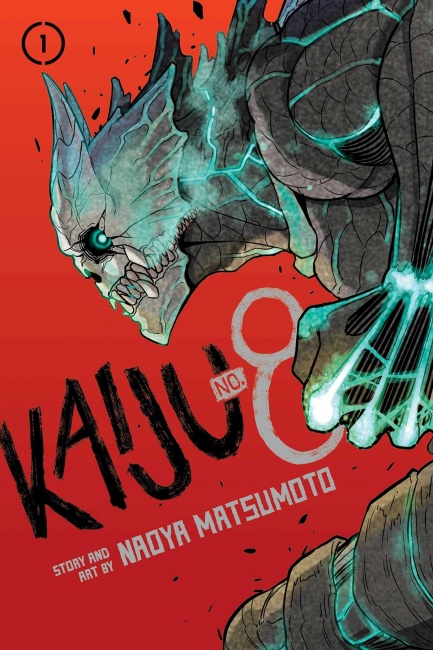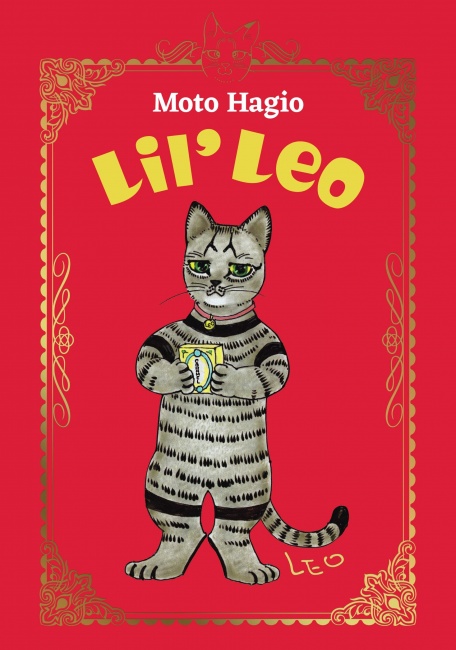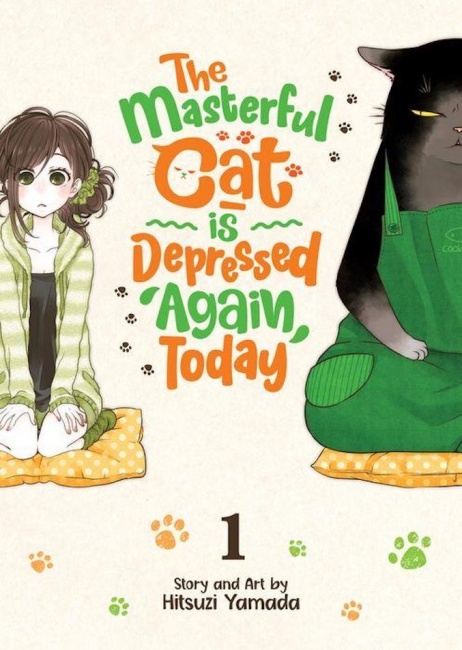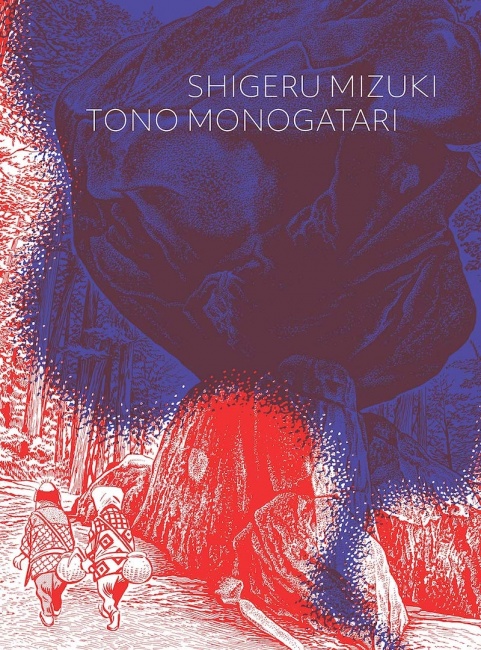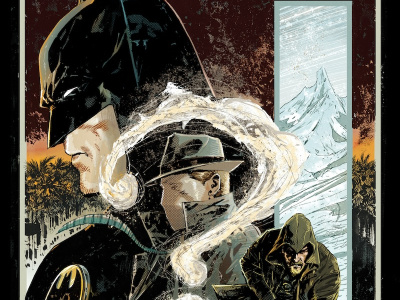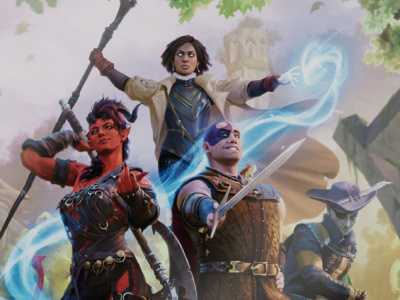The past year was a rich one for manga readers, with new series that spanned the genres and sometimes defied them, as well as new stories from veteran creators. Here’s a look at the ten best manga of the year, listed alphabetically.
Asadora!, by Naoki Urasawa (VIZ Media)Urasawa’s manga grab you by the throat and drag you into the story, and that’s exactly what he does with Asadora, which starts off with a firestorm at the 2020 Tokyo Olympics, with an enormous horned beast silhouetted against the flames, and then travels back in time to 1959, to the day the city of Nagoya was devastated by a typhoon. A washed-up World War II pilot kidnaps a 12-year-old girl, but the crime soon turns to an alliance when the two survive the storm together and turn to helping out the victims. From there, the story careens forward to the 1964 Olympics, the nature of the monster becomes clearer, and the mystery deepens. Urasawa has a real gift for drawing faces and settings, but his stories don’t always live up to the art. This one does. Hana-Chan and the Shape of the World, by Ryotaro Ueda (Yen Press)
This one-volume manga is one of those stories, like Yotsuba&!, that’s about a little kid and perfectly fine for a child to read but has a lot to offer grownups as well. In fact, like Yotsuba&!, it was published in a seinen magazine in Japan. Hana is a little girl who lives in a village with a traditional feel, although people have cars and televisions. She is independent-minded and imaginative, also like Yotsuba, but this book is a bit edgier. In one chapter, the grownups in the village set fire to a field of but something in the chemicals they are using turns everyone into grotesque creatures, including the kids; in another, Hana tricks the woman in the local bookstore into revealing her face, which is always covered by her hair; and in the darkest one of all, the children break into the home of a cat-hoarding old lady who has obviously (to an adult) died and been eaten by her cats. Ueda skillfully balances the darkness with humor, though, and Hana, her pet cats, and her friends are simply delightful. Haru’s Curse, by Asuka Konishi (Vertical)
Two sisters are close, one dies, and the other sister starts dating the dead girl’s boyfriend. Asuka Konishi handles this difficult situation with grace, showing her protagonist, Natsumi, and the boyfriend, Togo, as they go through different stages of coming to terms with their loss. Natsumi was close with her younger sister Haru, closer than most sisters, because of their parents’ troubled marriage and eventual divorce. Togo is the son of a wealthy family, and his romance with Haru was arranged, like everything else in his life. Once she is gone, both Togo and Natsumi have to face their own feelings and learn to deal with not just their grief but also their guilt, since their relationship feels like a betrayal. Konishi’s art is smooth and uncluttered, the characters all ring true, and the plot twists and resolves in ways that feel very natural. Kaiju No. 8, by Naoya Matsumoto (VIZ Media)
Kafka Hibino grew up determined to fight the kaiju who wreaked frequent destruction on his city; his best friend Mina had the same ambition. Now Kafka is an adult in his 30s, and while Mina is a star kaiju-fighter, he works in a less glamorous end of the business, cleaning up the scene after the battles. With some prodding from a younger co-worker, he decides to try once more to join the Defense Force, but before he can take the exam, something weird happens and he becomes a kaiju himself. The most dangerous and sought-after kaiju of all, in fact, although he can revert to his human form with some difficulty. He takes the exam anyway, knowing that if he slips even a bit, he will immediately become a target. This manga has a good mix of action, friendship, and competition, with a bit of gross-out humor tossed in as well, all very much in the Shonen Jump tradition. Keep Your Hands Off Eizouken, by Sumito Oowara (Dark Horse Comics)
Three high school girls form an anime club, but Eizouken is about as far as you can get from Genshiken. They aren’t watching anime, they are making anime, or at least, they’re trying to. Asakusa creates the settings and tech; Mizusaki draws characters; and Kanamori is the practical schemer of the trio, always looking out for opportunities to make money. Their club exists outside most of the normal rules, but they are determined to make it work, and when they are talking anime they can summon entire worlds into existence and change them on the fly. The story is an absolute delight to read and, in a true case of life imitating art, it has been made into an anime. Lil’ Leo, by Moto Hagio (Denpa)
Leo is a striped cat with big ambitions. Each of the eight chapters in this one-shot manga depicts him doing something not usually associated with cats, from going to school to doing marriage interviews (with human women) to trying to land a part in a movie (admittedly, a movie about cats). He even takes a shift as assistant in a manga studio and there, as in the rest of his life, he gets everything wrong, but hilariously so. Hagio is famous for her groundbreaking manga, including Heart of Thomas, The Poe Clan, and They Were Eleven (which Denpa will publish this year). Denpa gives this little gem a deluxe presentation, with gold foil on the cover, French flaps, and creamy paper, which makes for an attractive package. The Masterful Cat Is Depressed Today, by Hitsuzi Yamada (Seven Seas Entertainment)
Yamada’s story stands out among the many cat manga that came out this year because of its unique premise: Saku is a young working woman who drinks too much and doesn’t take care of herself, so her oversize cat does it for her. Yukichi is a hulking, dark presence who at first seems a bit ominous but turns out to be a perfect combination of cat and companion. He cooks, cleans, and does the grocery shopping but can’t resist a good toy. Saku goes to great pains to conceal his existence, although nobody else seems to be too startled with him, and things start to mash up hilariously when she starts dating her boss. The best thing about Yukichi is the way he can be almost human one minute, doing the dishes in a smock apron, and feline the next, as he curls up by Saku’s head when she is feeling ill. My Alcoholic Escape from Reality, by Nagata Kabe (Seven Seas Entertainment)
On the evening that Nagata Kabe’s My Lesbian Experience with Loneliness won the Harvey Award, she was lying in a hospital bed in so much pain that she couldn’t read the e-mail from her editor. Three years of serious drinking had taken their toll on her body, and she was suffering from both pancreatitis and a fatty liver. As those who have read her other books know, Kabe has been dealing with mental illness for years, and the success of her first manga didn’t make her life any easier. In fact, as she reveals in this short but heartfelt manga, it was so painful for her parents that she resolved never to do a memoir again. But that’s what she does, and she’s been getting steadily better at it, too. My Alcoholic Escape from Reality is in no way a retread of her earlier books; Kabe has matured as both a person and an artist, and she depicts this chapter of her story with clarity, even as she admits to relapsing into the drinking that put her in the hospital in the first place. Robo Sapiens: Tales of Tomorrow, by Toranusuke Shimada (Seven Seas Entertainment)
Robots and cyborgs are popular themes in manga, but often they star in futuristic action stories. This collection of interlinked short stories focuses on the questions that arise when the boundary between man and machine gets pushed farther than it is right now. These robots have artificial intelligence, they have something resembling feelings, and they are capable of blending seamlessly into human society, but they have a different set of circumstances and expectations, especially regarding time. Robots are immortal, after all. In one story, a robot guards a cache of nuclear waste for 250,000 years, visited occasionally by humans who change over the years in ways the robot never will; in another, a love between a human and a robot survives after death. Sort of. Shimada draws in a liquid, linear style, sticking to stark blacks and whites, which gives the book a retro feel that’s just a step away from creepy. Tono Monogatari, by Shigeru Mizuki (Drawn and Quarterly)
Mizuki is well known for his yokai stories, such as NonNonBa and the Kitaro series, but this book is different. The first Tono Monogatari was a collection of yokai lore published in 1910 by a bureaucrat who was afraid the country was losing its traditions as it modernized. Mizuki adapted the book into manga, inserting himself into the pages to offer commentary. Many of the stories could be summed up as “someone saw something weird up in the mountains once,” but Mizuki brings each of these stories to life, sometimes in horrifying detail (a few are quite violent). Translator Zack Davisson provides context in a foreword, and that plus Mizuki’s own asides make this book as informative as it is lively.




